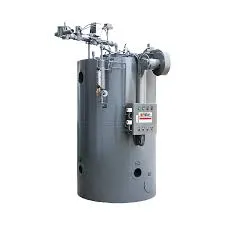नोव्हेंबर . 29, 2024 18:17 Back to list
sand casting factory
The Art of Sand Casting A Pillar of Modern Manufacturing
In the world of manufacturing, various processes have evolved to meet the diverse needs of industries. Among these, sand casting holds its ground as one of the oldest yet most versatile methods. This technique is employed in numerous sectors, from automotive to aerospace, allowing manufacturers to produce complex metal parts efficiently and cost-effectively.
Understanding Sand Casting
Sand casting, also known as sand mold casting, involves creating a mold from a mixture of sand and a binding agent. The primary material used in this process is silica sand, which is prized for its high melting point and ability to withstand thermal expansion. The procedure begins with the creation of a pattern, typically made from metal, wood, or plastic, which is then used to form the cavity in the sand.
The process entails several key steps
1. Pattern Making A pattern is crafted to replicate the desired final product. This pattern is usually slightly larger than the actual item to accommodate shrinkage during cooling.
2. Mold Creation The pattern is pressed into a sand mixture to create the mold. Each half of the mold is made separately, allowing for the eventual assembly of both halves once completed.
3. Core Placement If the part requires internal features, cores made from sand are placed within the mold to create these voids.
4. Pouring Molten Metal Once the mold is prepared, molten metal is poured into the cavity. The metal, often aluminum, iron, or bronze, is heated to a liquid state and carefully directed into the mold.
5. Cooling and Solidification After the metal is poured, it cools and solidifies within the mold. This phase is crucial, as it determines the final properties of the casted piece.
6. Mold Removal Once cooled, the sand mold is broken away, revealing the cast part. The surrounding sand can often be reused, making this an eco-friendly process.
7. Finishing The final steps involve trimming excess material, sandblasting, and applying any necessary surface treatments.
sand casting factory

Advantages of Sand Casting
One of the primary reasons sand casting remains popular is its versatility. It can accommodate a wide range of sizes, from small components to large structures, such as engine blocks. Additionally, the sand used in this process is relatively inexpensive, and the tooling costs are lower compared to other casting methods.
Sand casting also allows for complex geometries and intricate designs, making it an ideal choice for parts that require detailed features. Moreover, it can be used with various metals and alloys, providing a broad scope of applications across different industries.
Industry Applications
The application of sand casting spans multiple industries. In the automotive sector, for instance, it is extensively used to produce engine parts, transmission cases, and various structural components. The aerospace industry also benefits from sand casting, particularly for producing lightweight components that must meet stringent safety standards.
Additionally, sand casting plays a significant role in the construction industry, manufacturing parts such as valves, pumps, and fittings. It is also utilized by artists and craftsmen to create intricate sculptures and decorative items.
Challenges and Innovations
Despite its many advantages, sand casting comes with challenges, including limitations in dimensional tolerance and surface finish compared to more modern casting methods. However, ongoing innovations are addressing these issues. Advanced technologies like computer-aided design (CAD) and computer numerical control (CNC) machining are being incorporated into sand casting practices, allowing for increased precision and efficiency.
Moreover, the recycling of sand and the use of eco-friendly binders are contributing to a more sustainable casting industry, aligning with global trends toward environmental responsibility.
Conclusion
Sand casting may be an ancient technique, but its relevance in today's manufacturing landscape is undeniable. With continuous advancements in technology and a focus on sustainability, sand casting is poised to remain a crucial pillar in producing high-quality metal components across various industries. As manufacturers continue to explore its potential, sand casting will undoubtedly evolve, proving that sometimes, the old ways can be the most effective.
-
Durable Cast Steel Concrete Pipe Mold Bottom Rings & Base Trays
NewsAug.23,2025
-
Centrifugally Cast Iron Water Main Pipe for Reliable Mains
NewsAug.22,2025
-
Durable Centrifugally Cast Iron Water Main Pipe
NewsAug.11,2025
-
Centrifugally Cast Iron Water Main Pipes for Reliability
NewsAug.10,2025
-
High-Quality Centrifugally Cast Iron Water Main Pipes
NewsAug.09,2025
-
Durable Cast Iron Water Main Pipe & Drainage Solutions
NewsAug.08,2025


